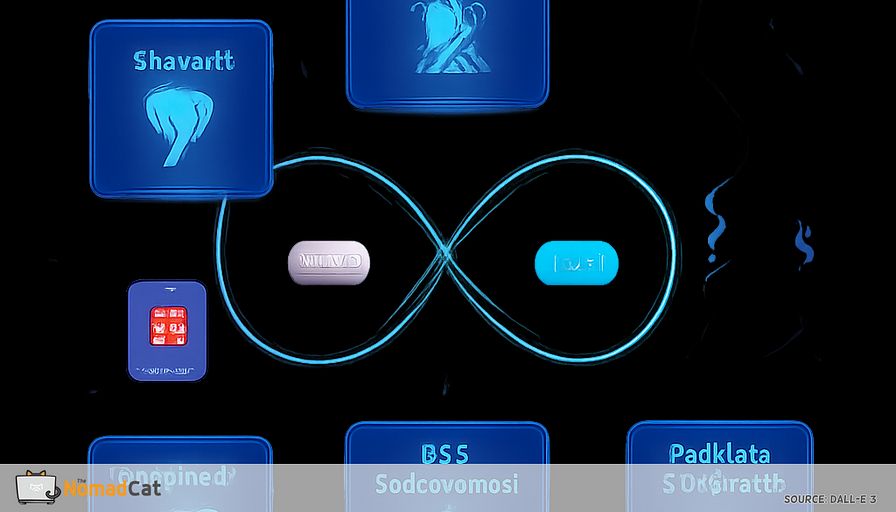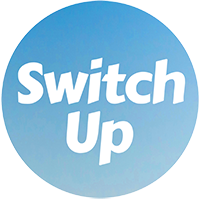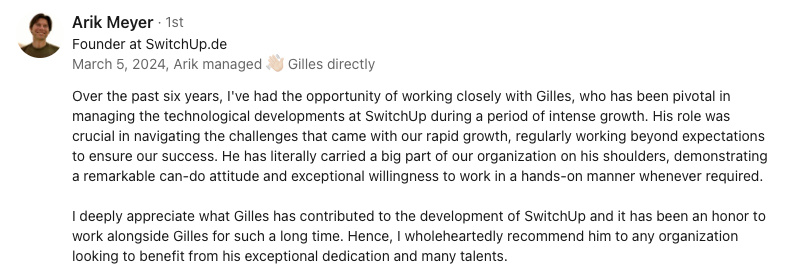Abstract:
The article introduces a practical and playful approach for tech professionals to develop effective self-reflection habits by conceptualizing mindset routines as a personal API. This framework transforms abstract advice about mindset into concrete, modular routines—each “endpoint” corresponds to a specific need or challenge, such as handling setbacks or celebrating wins, and operates through clear request/response cycles similar to coding practices. The article emphasizes documenting and versioning these routines, allowing for easy updates, regular reviews, and adaptation as life changes, such as transitioning from startup to freelance work—a shift illustrated by a developer who retired team-based endpoints and added solo-focused ones. Play and creativity are central to this system: routines can be refactored, merged, or retired, and playful tweaks like new prompts or celebratory logs keep growth enjoyable and sustainable. The approach also stresses the importance of setting healthy boundaries to prevent over-reflection, using structured responses to counter negative self-talk, and maintaining a sense of curiosity and flexibility. Personal anecdotes, such as celebrating routine changes after moving cities or tailoring endpoints for shifting work realities, demonstrate how this API approach supports ongoing, positive growth without becoming burdensome, making personal development a creative, evolving, and motivating process.
For tech professionals, the phrase “work on your mindset” can sound a bit like a bug report with no details—abstract, open-ended, and hard to approach. Still, the way we think and reflect is just as important to progress as any system or tool. I want to share an idea that’s helped me: treat your mindset like a personal API. It’s a simple, modular way to make self-reflection feel as logical and approachable as writing code.
Here, I’ll break down mindset routines into clear, actionable steps, much like endpoints in an API. You’ll see how to define your own “endpoints” for things like impostor feelings, setbacks, or daily wins, and how to build easy request/response cycles for your routines. I’ll also share tips for keeping your system relevant over time—think documentation, versioning, and quick “refactors” to keep things useful and light.
There’s room for play, too. Personal development doesn’t have to be just another item on your list. By the end, you’ll have a toolkit for building—and actually enjoying—a mindset routine that grows with you, wherever life or work takes you.
Mindset as your personal API
Making mindset tangible
Advice about self-reflection can seem slippery for those of us used to clear, logical systems. For me, the idea of “working on your mindset” used to sound vague—almost like debugging code without documentation. That’s where the API comparison comes in. By viewing mindset routines as endpoints and protocols in a personal API, personal growth gets structure. You break down fuzzy goals into smaller, clear parts. This isn’t just a clever image—it actually helps make development feel logical and accessible, a bit like writing code.
Modularity and creativity
APIs are simple, well-documented, and meant to be flexible. Looking at mindset routines like this, self-reflection turns into smaller, manageable pieces. Instead of trying everything at once, I might:
- Define clear endpoints for different needs
- Write down what each endpoint does
- Update or swap parts as my life changes
This approach lowers the barrier to starting and helps keep growth sustainable. And, the API idea opens the door to get creative with how you grow.
Playfulness in growth
Treating mindset routines as a personal API makes the work playful and experimental. Suddenly, growth isn’t just another task—it’s a creative project, something to play with and update over time. When I see routines as endpoints to test and improve, it feels less like a chore. And if something breaks, it’s just another bug to fix. Next, let’s look at how to define your own “endpoints”—the key pieces of your mindset API.
Naming your mindset endpoints
Concrete endpoints
Endpoints here are recurring mindset needs—like handling setbacks, noting wins, or managing self-doubt. Giving each need a simple name brings clarity and structure. Rather than feeling lost in general tips, it’s easier to pinpoint what to work on and track what changes. Here’s how I use the “Win-Log” habit: at the end of each day, I write down one small thing that went well, even if it’s just “I finally fixed that annoying CSS bug.” The prompt I use is: “What is one thing I did today that I’m proud of, no matter how small?” This helps me notice progress I’d otherwise ignore.
Mindset API endpoint examples
- /log-win for celebrating successes, big or small
- /process-setback for reframing mistakes and learning
- /reflect-daily for routine check-ins and awareness
Examples like these help turn abstract ideas into routines that actually fit into daily life. Each endpoint works best with a clear protocol, much like any API you’d build.
Simple protocols for each endpoint
Every endpoint should have a simple setup:
- Define what triggers it (like the end of a day or after a project milestone)
- Decide what info you want (could be a quick note, a rating, or a lesson learned)
- Choose the kind of prompt or action it returns (maybe an affirmation or a next step)
Laying out these steps makes reflection easier to repeat. Once you’ve listed your endpoints, the next move is designing how they actually work for you.
Designing your initial mindset endpoints
Actionable endpoints
Most tech professionals run into mindset challenges—impostor feelings, perfectionism, burnout, or trouble with feedback. I’ve definitely been there, especially with impostor syndrome. Instead of leaving these as vague worries, I treat each as an endpoint in my mindset API. For example, impostor syndrome becomes its own endpoint, as does perfectionism or burnout. Mapping out my big obstacles helps turn abstract struggles into something I can work with.
For each challenge, I outline two things: the “request” (trigger event or emotion) and the “response” (reflection prompt or action). If a tough code review leaves me stuck, this might trigger my /process-setback endpoint. The response could be, “What can I learn from this?” or “Which assumptions could I challenge?” One journaling prompt I use for impostor syndrome is: “What evidence do I have that I’m not qualified? What evidence do I have that I am?” (This is based on a cognitive behavioral therapy technique—challenging negative thoughts with real evidence. Studies show that this kind of journaling reduces impostor feelings over time.) Pairing triggers with responses makes self-reflection more automatic, so I’m not left guessing what to do next.
A modular API lets me update these parts as I notice new patterns. I add new endpoints as fresh challenges pop up. I refine or retire old ones that don’t help much. It’s like keeping my toolbox up to date without having to start from scratch each time. A good start: choose a few endpoints for your most common challenges and let your system grow as you spot more. Now, let’s see how to make these request/response cycles even simpler.
Request and response cycles
Each endpoint works best with a clear contract: when a trigger appears, I send a “request” (maybe jotting a note), and get a “response” (a prompt or small action). For example, after a hard meeting, request is the note, response could be a reflection or a new way to see things. Here’s how this can look:
- Notice a trigger (like a negative thought or event)
- Send a request (write it down or make a note)
- Get a response (answer a prompt or try an exercise)
Example: with /log-win, request is a success. The response: what went well, which skills helped, and how it felt. For /process-setback, request is a disappointment. The response could guide a root cause check or a note of self-kindness like, “What would you tell a friend here?” These prompts make it clearer what to do next. With practice, these routines become easier.
As cycles repeat, reflection can shift from something hard to a natural habit. This structure slowly builds resilience and awareness, helping you face new setbacks more calmly. To keep this helpful, it’s smart to write your endpoints down and review them now and then, adjusting as needed.
Keeping mindset routines effective with documentation and versioning
Documentation
Making mindset routines clear starts with simple documentation. Writing down your endpoints and request/response steps puts shape to your routine. It moves from a vague idea to a process you can improve. With everything mapped out, you spot what works and where you can tweak things. Documentation turns good intentions into real steps you can revisit and update.
Simple logs
A brief record helps show what actually helps. When I keep notes, I can see which endpoints bring value and which ones to change. Even a short log after using an endpoint keeps things on track. For example:
- Quick summary of what triggered it
- Note on which prompt or response I picked
- Any insight or outcome
This habit helps with regular reviews and tracks real growth.
Visible progress
Even basic logs boost consistency, turning invisible progress into something you can notice. Seeing small successes—like changing a pattern or making time for a check-in—builds motivation. As in any codebase, routines should adapt, and that’s where versioning plays a part.
Keeping routines fresh with versioning
Version numbers
Mindset routines work better with updates. Giving version numbers to your protocols makes it easy to track what changes. Each tweak or experiment is logged, so growth happens on purpose, not by accident. If a new routine doesn’t fit, you can switch back, knowing what changed and why.
Experimenting safely
Versioning makes it easier to play with your routines. I try new prompts, adjust how I reflect, and don’t worry about breaking the system. If something doesn’t help, I revert to what works. Flexibility keeps mindset routines from turning into a boring list. Imagine it as running mini tests for yourself—sometimes a small update is a nice surprise.
Staying playful and adaptive
This approach keeps routines from going stale or heavy. I treat my system as something I can remix or pause when needed. A playful, evolving routine is more sustainable and, best of all, more fun. As life and work shift, keeping routines light means your system is always ready for the next thing.
Keeping your mindset API lean and relevant
Evolving your system
As life and work change, new challenges appear. Adding fresh endpoints lets routines keep up. For example, after moving from Berlin to Lisbon, I added an endpoint like /navigate-transition to make sense of new feelings. This flexibility keeps my system in sync with my needs. It’s also fine to retire endpoints that aren’t helpful anymore. If managing onboarding stress is old news, I drop it. Studies on self-reflection during career change suggest that updating routines as you go is key for growth.
When an endpoint is no longer useful or feels like busywork, letting go is smart. Removing old routines frees up space for what’s important. A seasonal review makes this easy—look at your routines every few months and see what’s still useful. Experts say deleting stale habits is just as important as adding new ones.
Scheduled reviews such as quarterly check-ins help keep focus and stop routines from growing out of control. Sometimes, making things simpler is even better than adding more. That’s where refactoring steps in.
Refactoring for simplicity
Just like code, mindset routines need a tidy-up now and then. Combining similar endpoints, cutting extra steps, or using simpler prompts can prevent overwhelm. If two endpoints both cover feedback, I merge them into one to make the process quick and easy. The goal is not perfection—it’s making my system work for me with less hassle.
Refactoring is about making things lighter, not perfect. Keeping routines simple and a little playful supports long-term engagement and avoids burnout. Play and fun are shown to help with staying motivated, so now let’s look at boundaries.
Setting boundaries and safeguards for healthy mindset routines
Balanced reflection
Self-reflection is useful, but too much can make things worse. Too much rumination can bring more anxiety, stress, and slow problem-solving. Like any good API has limits, mindset routines should too. I’ve struggled with this, especially after moving to Lisbon. Freelancing blurred the line between work and rest, and I found myself journaling late into the night, chasing solutions to every worry. Eventually, I set a boundary: no mindset routines after 8pm. My /set-boundaries endpoint now prompts me with, “Is this the right time for reflection, or do I need rest?” It’s not always easy, but it helps me protect my energy and keep growth helpful, not heavy.
Time-limited reflection
To avoid endless loops, I use these boundaries:
- Schedule regular, short sessions—maybe 10 to 20 minutes
- Use a timer or reminder to move on when time is up
- Watch for repetition; journals or thought diaries help spot unhelpful patterns
If I notice a session is turning into negative self-talk or overthinking, it’s a sign to stop and do something else. These practical boundaries help keep reflection sharp and avoid mental fatigue.
Redirecting when stuck
When reflection feels like a mental loop, I try changing focus. I get outside, do something practical, or try a quick mindfulness exercise to reset. This break often breaks rumination and restores balance. And for those times when negative thoughts show up, the next section gives ideas for handling them.
Handling negative self-talk and mental 'bad requests'
Responding to negative thoughts
Negative self-talk and distorted thinking are like broken requests to my mindset system. Instead of letting these crash everything, I use structured journaling exercises. For example, when I catch myself thinking, “I’m not good enough for this project,” I open my journal and use this prompt: “What would I say to a friend in my shoes?” Or, I use a worksheet where I write down the negative thought, then list three pieces of evidence for and against it. This is a micro-exercise from cognitive behavioral therapy, and research shows that even five minutes of this kind of journaling can reduce negative self-talk and improve mood (see: meta-analysis on expressive writing and mental health outcomes).
Journaling tools for healthier thinking
Systematic tools, such as these worksheets or small experiments, fit right into solo journaling. I keep a few templates handy in my notes app, so when a “bad request” hits, I can quickly run through the steps. This helps me swap out negative patterns for more balanced ones. Keeping these tools ready makes sure my mindset work remains positive and, at times, even a little enjoyable.
Building for joy and play
Experimenting with routines
Approaching mindset routines like a sandbox keeps things light, curious, and fun. I celebrate the small upgrades and tweaks. Treating routines as creative projects often makes motivation and resilience easier to find. Small changes—trying new prompts, adding a “bonus round” after a tough day, or marking updates with a favorite emoji—can help keep things interesting. Gamification research shows that adding playful elements, like progress bars or rewards, increases habit stickiness by up to 40%. The key is to keep things light and not too serious.
Celebrating upgrades and small wins
Every time I add, upgrade, or retire an endpoint, I pause to notice the change. Noticing small improvements builds motivation and helps keep growth a positive thing. For example, after moving from Berlin to Lisbon, I celebrated little changes—like swapping out a reflection prompt or letting go of a habit that didn’t fit. It’s a bit like gardening: new routines grow, old ones get pruned, and sometimes letting go matters as much as starting something new. Personalizing routines and celebrating changes let growth feel easier and smoother.
There was a moment, not long after I left my corporate team, when I felt totally isolated. The first few weeks in Lisbon, I missed the daily standups and hallway chats. My motivation tanked. But when I started treating my mindset routines as a playground—adding silly prompts, like “What’s the weirdest thing I learned today?”—I felt my energy come back. Playfulness made the difference between feeling stuck and feeling curious again.
Evolving your mindset API after a career shift
Updating routines for new realities
When I moved from fast-paced startup life in Berlin to freelancing in Lisbon, my routines needed a rethink. Things like daily team check-ins or schedules built for teamwork just didn’t fit anymore. New challenges turned up, like isolation and building new habits. In these times, my mindset API needed an update. Research shows that structured journaling during career transitions improves adaptation and reduces stress (see: Journal of Vocational Behavior, 2021).
Customizing endpoints
I retired endpoints for team syncs and reviews and added new ones to fit solo work. Endpoints like /reflect-daily made it easier to handle uncertainties, and /set-boundaries helped with work-life balance. Keeping a quick log or simple note after using these endpoints showed me which routines helped most. Documentation and versioning made it easy to adjust and see progress without getting lost.
Tracking changes to prevent regression
Having a record of changes proved valuable. With each tweak, it was easier to see which routines improved focus or mood. Regular reviews—sometimes weekly, sometimes monthly—helped keep routines fresh and avoid slipping backwards. Even playful tweaks, like testing a new question or retiring a stale habit, made growth sustainable. This way, mindset work never felt like just another job.
Keeping routines playful and sustainable
Refactoring through reviews
Every few months, I check my mindset API, a bit like tidying code but for personal routines. Merging similar endpoints, streamlining prompts, and cutting busywork keeps things from piling up. Sometimes a random “upgrade” prompt gets added, giving me a new question for a week or a surprise gratitude exercise. These small touches keep things interesting and routines from turning stale. Playful reviews make it easier to see what works and what needs change.
Staying engaged and curious
This process helps me stay engaged and even a bit curious about what’s next. Personal growth stopped being about fixing problems and became something to enjoy—a source of energy, not just another obligation. With a playful and modular setup, routines always flex as life changes. This curiosity and openness to try new ideas make long-term growth possible—and satisfying.
Treating mindset as a personal API offers tech professionals a structured, playful way to approach self-reflection. Clear endpoints, request/response cycles, and light documentation transform vague advice into practical routines. Regular reviews and versioning keep things fresh, while playfulness keeps energy up. It's always fine to retire old routines or refactor as life changes. The best toolkit is one that grows with you, not a rigid checklist. Sometimes, a small tweak or playful touch makes all the difference. Small surprises can really keep routines enjoyable and easy to stick with. (And if you spot a typo or a bit of Frenglish, well, that’s just part of my v1.3.)














